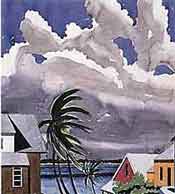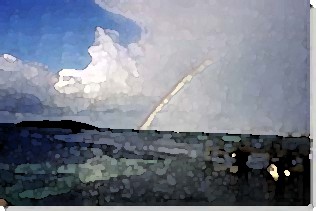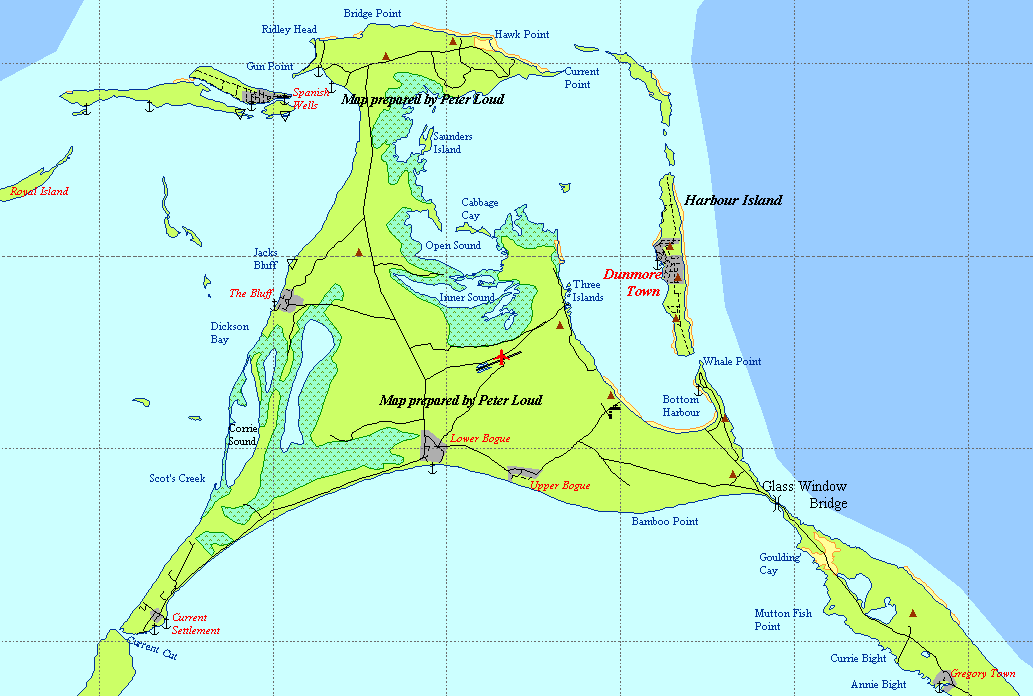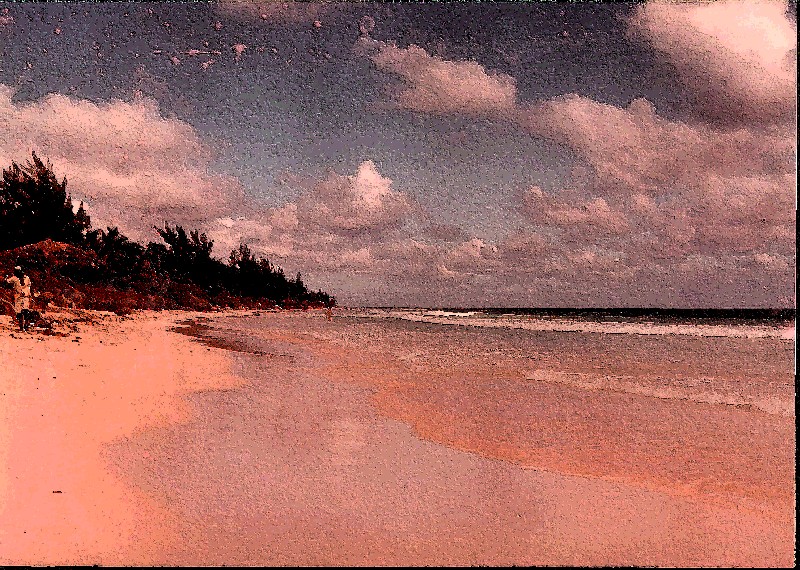James
Cistern -
Legend has it that the community of James Cistern was discovered by James,
a ship captain whose ran aground on the jagged reef of the northern shores
of James Cistern. It is said that he and his men found a hole from which
he revived himself, therefore the community was named James Cistern. Even
today, the drinking supply of James Cistern is supplied from this wonder
of nature, called Ocean Hole.

The earliest recorded history of James Cistern, found in the archives of the Methodist Church, states that the community was established by freed slaves who migrated from the plantations of Exuma (the Rolle Estates) and Cat Island (the Johnsons' and Bethels' Estates). Today, these surnames are still prevalent in the community.
The community was officially named after Sir James Carmichael Smythe, who served as the Crown Colony's Royal Governor between 1829 and 1835. He was an abolitionist who was much concerned with the well-being of the freed slaves. He contributed one thousand pounds of his own money to establish schools for the freed black slaves in Nassau and the Family Islands. He is best known for shutting down the Parliament of the day because it would not pass legislation that would prohibit plantation owners from lashing or whipping their female slaves.
He commissioned the erection of the Columbus Statue that is located at Government House, and allowed salt-rakers from the Family Island to sell their salt to the markets in Nassau. This served the purpose of the inhabitants of James Cistern, because saltraking was a lucrative part of their income. Governor Smythe's contribution to the well-being of the Bahamian people was so widely established that today Carmichael Road, Carmichael School and James' Point were named in his honour.
The early inhabitants of James Cistern were hard-workers who made their living from fishing, sponging, salt-raking, farming and salvaging wrecked ships. They also made history when they leased their commonage land to the United States Government to establish the Naval Base and Missile Tracking System.
North Eleuthera's Townships
For
more information, see www.EleutheraLiving.com
Eleuthera
is a beautiful, one hundred and ten mile long island with rolling hills
and magnificent beaches. Dotted with an array of quaint settlements, this
island's economic base varies, as do the townships themselves.
Spanish Wells centers around the fishing industry for which it
is famous. Named for the deep fresh water wells found here by its first
settlers, this small, picturesque island is strewn with beautifully painted
18th century houses and immaculate flower gardens.
The Current, The Bluff & the Bogues in the north are farming
and fishing townships. The rich soil and abundance of water yield a variety
of citrus and other produce.
Gregory Town, the pineapple princess of The Bahamas, is nestled
on a hillside. This township is home of the popular, annual Pineapple
Festival. Visitors are also attracted to this settlement, due in part,
to it proximity to the world famous Surfer's Beach. Hatchet Bay is nestled
away from the main highway, with a tranquil harbour and marina where yachtsmen
have anchored for many years to experience the quiet
serenity of this sheltered inlet.
James Cistern sits on a hillside, along the water's edge, just
about a mile south of the Cliffs.
Governor's Harbour - a quaint, colonial style settlement is home
of the first visitors to Eleuthera (the Eleutheran Adventurers) and today
it houses the offices of the Local Government and Island Administrator.
It is also the home of the one hundred year old, newly restored, Haynes
Library. Picturesque Cupid's Cay adjoins Governor's Harbour.
Tarpum Bay - a charming artists' colony lost in time. See George Major's www.tarpumbay.com for daily news of the village.

Eleuthera & Briland Travel Guide
Eleuthera,
Spanish Wells and Harbour Island are three specific and unique destinations,
all rolled into one:
![]()
You'll see the dramatic Glass Window Bridge as it balances the calm Caribbean
Sea on one side, and the hearty Atlantic Ocean on the other with a single-car
wingspan; feast on tasty pineapples and tan on pink sand beaches; scuba
dive the world-famous Current Cut drift dive at more than 7 knots per
hour.
You
can also visit Preacher's Cave that was once used for shelter by the earliest
European settlers of The Bahamas; ride horseback down a deserted beach;
explore the dramatic Hatchet Bay network of underground caves as used
by the original Arawak Indians; marvel at the sunset overlooking Hatchet
Bay and Alice Town; watch descendants of the 16th century Eleutheran Adventurers
feed the fish at the Rock Sound Ocean Hole, or climb the cliffs in the
north for a dramatic view of both the Caribbean and Atlantic oceans.
Hotel
Directory Briland & North Eleuthera |
|
Coral
Sands Hotel |
800
468 2799 / 242 333 2320 Fax - 242 333 2368 |
Dunmore
Beach Club |
800
688 4752 / 242 333 2200 Fax - 242 333 2429 |
Ocean
View Club |
242
333 2276 |
Pink
Sands Hotel |
800
688 7678 / 242 333 2030 Fax - 242 233 2060 |
Romora
Bay Club |
800
327 8286 / 242 333 2325 Fax - 242 333 2500 |
Runaway
Hill Club |
800
728 9803 / 242 333 2150 Fax - 242 333 2420 |
The
Landing |
800
688 4752 / 242 333 2707 Fax - 242 333 2650 |
| Tingum
Village Hotel |
242
333 2161 |
Valentine's
Resort & Marina |
242
333 2142 Fax - 242 333 2135 |
Hatchet
Bay Rainbow Inn |
800
688 0047 / 242 335 0294 Fax - 242 335 0294 |
Spanish
Wells Spanish Wells Yacht Haven |
242
333 4255 Fax - 242 333 4649 |
St.
George's Hotel |
242
333 4075 |

